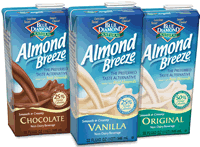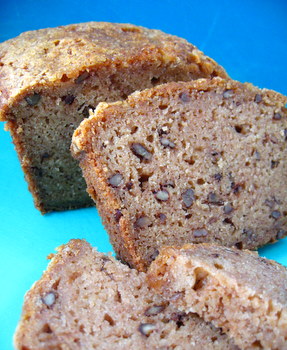 Almond milk is not milk, although it does resemble milk in color. The creamy white liquid is made by grinding almonds and water together, then removing the almond solids and leaving only the liquid behind. Since most of the almond solids are removed and the nuts are not pressed to squeeze out all of the oil, almond milk is low in both fat and calories. It also is cholesterol free and, not being an actual milk product, contains no lactose. Most producers of almond milk add in calcium, as well as vitamins D and E, so that those who chose to drink almond milk in place of cow’s milk will not be missing out on those nutrients. homemade almond milk does not provide these same things, although it is easy to make.
Almond milk is not milk, although it does resemble milk in color. The creamy white liquid is made by grinding almonds and water together, then removing the almond solids and leaving only the liquid behind. Since most of the almond solids are removed and the nuts are not pressed to squeeze out all of the oil, almond milk is low in both fat and calories. It also is cholesterol free and, not being an actual milk product, contains no lactose. Most producers of almond milk add in calcium, as well as vitamins D and E, so that those who chose to drink almond milk in place of cow’s milk will not be missing out on those nutrients. homemade almond milk does not provide these same things, although it is easy to make.
Interestingly, while almond milk may seem like a trendy vegan/lactose-free item right now, it has been around for centuries. This is in large part because back in the time before reliable refrigeration was available, milk would go bad quickly if not made into butter or cheese. Almond milk lasted and required little in the way of specific storage.
Almond milk, much like soy milk, is a popular nondairy substitution in the kitchen, both in cooking and in baking. It is usually available in sweetened, unsweetened and flavored varieties. Some people prefer it to soy milk because it has a much milder flavor and often has a smoother consistency. It can be substituted quite easily into cakes, muffins and breads in place of regular milk, although you may find some differences in consistency if you opt to use it in puddings or other dairy-heavy dishes – especially those that specifically call for richer whole milk or light cream.
Personally, I really like sweetened vanilla almond milk. I love how it really boosts the flavor of things that I use it in, whether it’s something simple like a bowl of oatmeal or a more complex bread. I have found that soy milk sometimes adds a soy-ish note to foods, especially when they’re not strongly spiced, and almond milk has generally given me better results in simple recipes that need a more subtle flavor, like pancakes and other dishes with only a few ingredients.






Aimee
April 24, 2008Because of potential allergies to dairy and soy, I’ve recently started using almond milk. I often use it in puddings, but the consistency is generally more runny than desired. Also, I am toying with the idea of whipping up a batch of homemade yogurt using an almond milk base. The tricky bit is that I will need to hunt down a probiotic starter since my local markets don’t have almond yogurts available for purchase..
Dizzied
April 24, 2008Almond milk has been my recent obsession since I discovered the new unsweetened version. Sweetened almond milk is too sweet for me in most uses so this is a great lactose-free option.
I used half unsweetened almond milk and half regular milk (because that’s what I had on hand) making butterscotch pudding cake last week, a recipe entirely inspired by all your pudding cakes. I followed the recipe for orange pudding cake but used extra milk in place of juice, brown sugar instead of white, and stirred in 2 T. of melted butter. Another addition to the pudding cake collection, which have a frequent spot in the rotation since I discovered them on your site. Thanks!